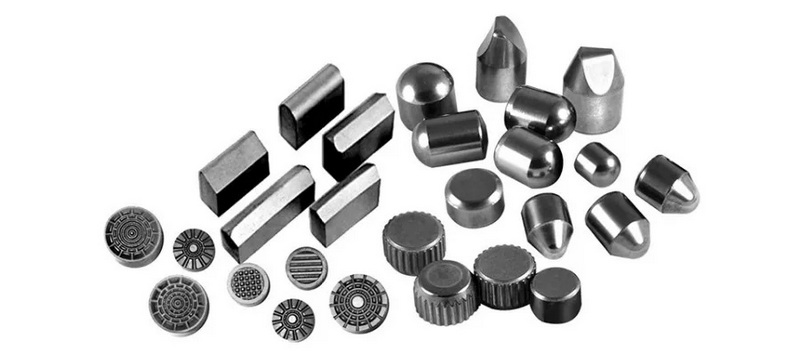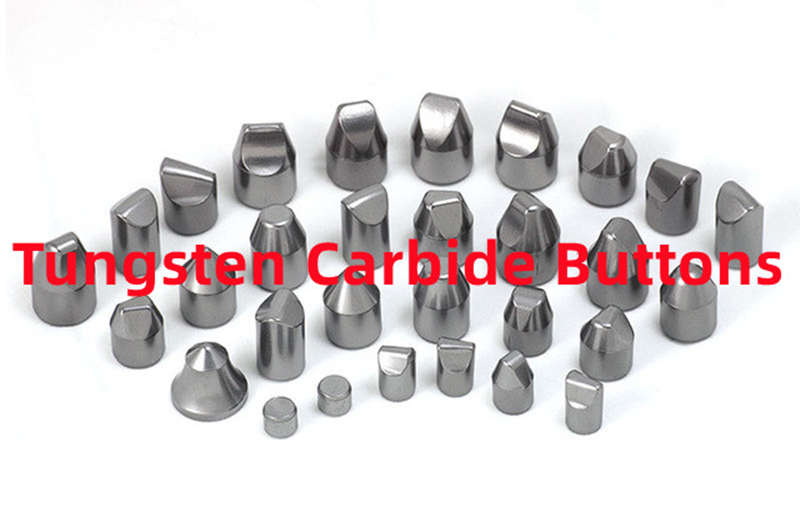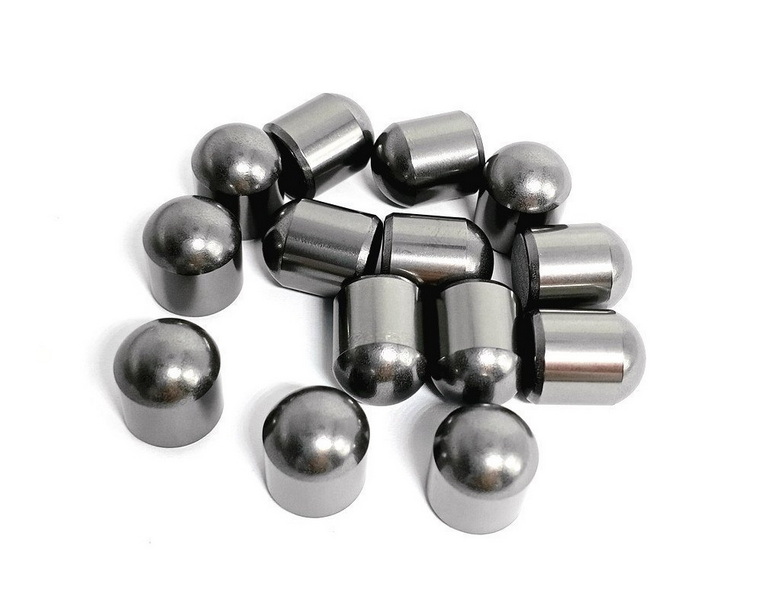Content Menu
● Introduction to Tungsten Carbide Buttons
>> Safety Precautions
● Methods for Removing Tungsten Carbide Buttons
>> 1. Heat and Hammer Method
>> 2. Acid Treatment Method
>> 3. Grinding Method
>> 4. Electrochemical Method
● Reprocessing Recovered Tungsten Carbide
>> Reprocessing Steps
>> Benefits of Reprocessing
● Common Challenges and Solutions
>> 1. Button Breakage
>> 2. Matrix Residue
>> 3. Drill Bit Damage
● Conclusion
● FAQ
>> 1. What Safety Precautions Should I Take When Handling Tungsten Carbide?
>> 2. How Do I Heat Tungsten Carbide Buttons for Removal?
>> 3. Can Sulfuric Acid Be Used to Remove Tungsten Carbide Buttons?
>> 4. What Are the Risks of Grinding Tungsten Carbide?
>> 5. How Can Recovered Tungsten Carbide Be Reprocessed?
● Citations:
Tungsten carbide buttons are widely used in drilling and mining applications due to their exceptional hardness and durability. However, when these buttons become worn or damaged, removing them from drill bits can be a challenging task. In this article, we will explore various methods for removing tungsten carbide buttons, including safety precautions and practical techniques.

Introduction to Tungsten Carbide Buttons
Tungsten carbide is a composite material made from tungsten carbide particles bonded together by a metallic matrix, typically cobalt. Its hardness ranges from 8.5 to 9.5 on the Mohs scale, making it extremely resistant to wear and tear. However, this hardness also makes it brittle and prone to cracking under stress.
Safety Precautions
Before attempting to remove tungsten carbide buttons, it is crucial to take safety precautions:
- Protective Gear: Wear safety glasses, gloves, and a dust mask to protect against flying particles and hazardous dust.
- Work Environment: Ensure proper ventilation to minimize inhalation risks.
- Tool Maintenance: Regularly inspect cutting tools for wear or damage to prevent accidents.
Methods for Removing Tungsten Carbide Buttons
1. Heat and Hammer Method
This method involves heating the steel surrounding the carbide button until the brazing material melts, then using a hammer to dislodge it.
- Equipment Needed: Oxy-acetylene torch, hammer.
- Procedure:
1. Heat the area around the carbide button until it reaches a cherry red color.
2. Use a hammer to gently tap the button out of its socket.
2. Acid Treatment Method
This method involves using sulfuric acid to dissolve the steel surrounding the carbide inserts.
- Equipment Needed: Sulfuric acid bath, steam heating.
- Procedure:
1. Soak the drill bits in a sulfuric acid bath at a temperature between 150°F and 200°F.
2. After the steel is sufficiently dissolved, wash and heat the bits to loosen the inserts.
3. Use vibration to dislodge the inserts.
3. Grinding Method
For buttons that cannot be removed by heat or acid, grinding may be necessary.
- Equipment Needed: Grinder with a diamond wheel.
- Procedure:
1. Secure the drill bit firmly.
2. Use a grinder with a diamond wheel to carefully grind out the carbide button.
4. Electrochemical Method
This method involves using an electrochemical process to dissolve the metal matrix holding the carbide in place.
- Equipment Needed: Electrolytic bath, power source.
- Procedure:
1. Submerge the drill bits in an electrolytic bath.
2. Apply an electric current to dissolve the metal matrix.
3. Once dissolved, remove the carbide buttons.

Reprocessing Recovered Tungsten Carbide
Once the carbide buttons are removed, they can be reprocessed into new inserts. This involves melting and reforming the carbide material into the desired shape.
Reprocessing Steps
1. Collection: Gather the recovered carbide buttons.
2. Cleaning: Clean the buttons to remove any contaminants.
3. Melting: Use a high-temperature furnace to melt the carbide.
4. Forming: Press or cast the molten carbide into new inserts.
Benefits of Reprocessing
Reprocessing tungsten carbide not only reduces waste but also saves resources by reusing valuable materials. It is an environmentally friendly practice that can significantly reduce production costs.
Common Challenges and Solutions
1. Button Breakage
If a carbide button breaks during removal, it can be difficult to extract the remaining pieces. Using a combination of grinding and acid treatment can help dissolve the surrounding material and facilitate removal.
2. Matrix Residue
After removing the carbide buttons, residue from the metal matrix may remain. This can be cleaned using a mild acid or a wire brush.
3. Drill Bit Damage
To avoid damaging the drill bit during removal, ensure that the heating or grinding process does not excessively heat or stress the surrounding material.
Conclusion
Removing tungsten carbide buttons from drill bits requires careful planning and execution. By choosing the appropriate method—whether it be heat, acid treatment, grinding, or electrochemical—you can efficiently recover these valuable materials for reprocessing. Always prioritize safety and follow best practices to ensure a successful outcome.

FAQ
1. What Safety Precautions Should I Take When Handling Tungsten Carbide?
Always wear protective gear such as safety glasses, gloves, and a dust mask. Ensure proper ventilation to avoid inhaling hazardous particles.
2. How Do I Heat Tungsten Carbide Buttons for Removal?
Use an oxy-acetylene torch to heat the area around the button until it reaches a cherry red color. Then, use a hammer to gently tap it out.
3. Can Sulfuric Acid Be Used to Remove Tungsten Carbide Buttons?
Yes, sulfuric acid can be used to dissolve the steel surrounding the carbide inserts. This method involves soaking the drill bits in an acid bath and then heating them to loosen the inserts.
4. What Are the Risks of Grinding Tungsten Carbide?
Grinding tungsten carbide can generate hazardous dust and may cause the material to crack if not done carefully. Use a diamond wheel and maintain proper cooling to minimize risks.
5. How Can Recovered Tungsten Carbide Be Reprocessed?
Recovered carbide can be melted and reformed into new inserts. This involves cleaning the material, melting it in a high-temperature furnace, and then pressing or casting it into the desired shape.
Citations:
[1] https://www.youtube.com/watch?v=st8CTs7nNc8
[2] https://shop.machinemfg.com/how-to-cut-tungsten-carbide-rods-an-overview/
[3] https://patents.google.com/patent/US4170513A/en
[4] https://www.gmd-eqpt.com/info/cemented-carbides-precautions-93309521.html
[5] https://www.scrapmetalforum.com/scrap-metal-questions-answers/23732-rock-drill-bit-tungsten-carbide-tip-removal.html
[6] https://www.linkedin.com/pulse/9-safety-precautions-while-using-tungsten-carbide-tools-
[7] https://www.litechtools.com/tips-for-proper-maintenance-of-tungsten-carbide-button-bits.html
[8] https://cpcb.nic.in/displaypdf.php?id=aHdtZC9UdW5zZ3Rlbl9TY3JhcF9NZXRhbF9DdXR0aW5nXzEzLjA0LjE3LnBkZg%3D%3D
















